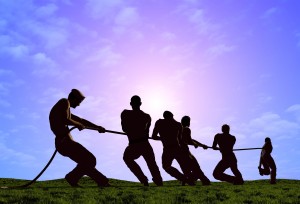 Solving a problem together can work wonders, which is why there’s a cliché: two heads (or more) are better than one. This is why teams succeed more than lone-workers. People working together come up with more options and solutions when faced with a problem. This is also the reason why team building in the workplace should be considered a never-ending opportunity for growth.
Solving a problem together can work wonders, which is why there’s a cliché: two heads (or more) are better than one. This is why teams succeed more than lone-workers. People working together come up with more options and solutions when faced with a problem. This is also the reason why team building in the workplace should be considered a never-ending opportunity for growth.
However, to build employees’ camaraderie and to encourage them to bond with each other through regular meetings and fun non-work activities is not enough. There are five elements though, regardless of the environment, which never fail in bringing people together.
Here’s the Not-so Secret Sauce for Bringing People Together
A Common Plight or Problem
A shared problem is one of the best ways to motivate people to work together. When employees have a common pain, they work together because of that common interest, specifically the common interest to make that problem go away. Employees become collaborators instead of competitors or apathetic workers once they find out that they have a common problem to deal with.
Collaborations may seem difficult for many people , at least at first. Collaborations are slower and more complex, as compared to independent decision-making. To collaborate would mean giving up a certain degree of independence over the problem because the people solving it need to connect, listen and work with one another. This is why it’s a great way to foster team building in the workplace.
An Influential Somebody
A great leader can influence employees to do better both in their personal and professional lives. He acts as the magnet and the glue that holds people together. A leader with a wide reach and authentic influence is respected. When a leader is respected, people want to do their best for them. Being influential helps you get things done.
A Mix of Personalities
Team building requires a mixture of personalities, experience and expertise, as this is important in making decisions for the greater good of everyone involved.
There are three varieties of personalities: authoritative, reputational and cognitive. Ideally, a team that’s composed of people with these varieties are drawn together to create a single core group. A certain variety of personalities and substance, when it comes to creating a cohesive team, helps promote team building. Just don’t forget, people omitted from the collaboration tend to become critics or saboteurs of the project.
A Set of Rules
A certain set of established rules help in resolving difference and avoiding disputes. In turn, it promotes better collaboration and ensures a harmonious relationship between team members and between team members and management.
When something goes wrong, people go back to the rules. It’s like playing a game. When a player does something wrong or out of the ordinary, the rulebook is consulted and the proper actions are executed, and then the game goes on. In this case, business goes on. It provides the framework to handle situations, eliminating high emotions and hostility.
There are three parts of these rules: The Purpose, The Principles and the Operating Procedures. Why are these rules here? What is its vision? And how do you implement them?
People are drawn together because of a common standard. Each employee may have his own opinion, thoughts and values, but in order to collaborate effectively and agree on something, the team has to have a common ground to hold them in place as they reach their goal.
This is something the leader always has to remember in promoting team building so that the coherent force that pulls his team together is kept intact regardless of the challenges they may face.
Team building can be challenging.
Part of the challenge is obtaining consensus. Want to learn the secrets to consensus building?
Click the link below and download our guide Functioning Together: Consensus and Team Building






